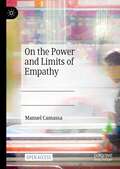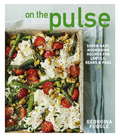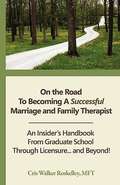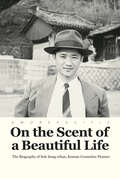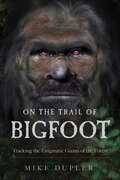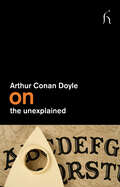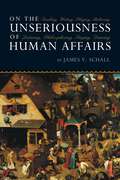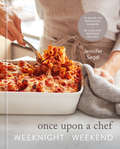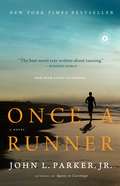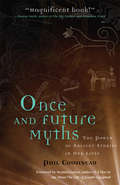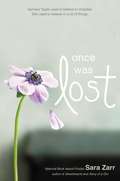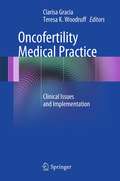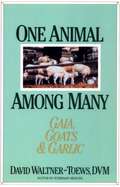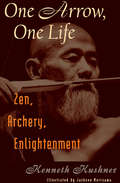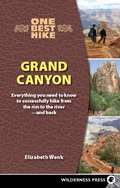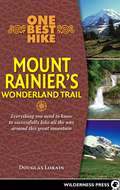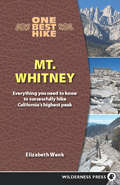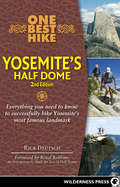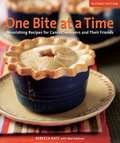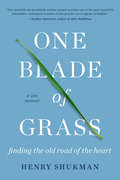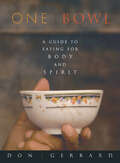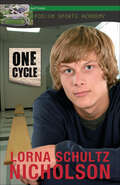- Table View
- List View
On the Power and Limits of Empathy
by Manuel CamassaThis book has two main objectives. The first is to identify and adequately describe the phenomenon of empathy. This essentially means offering a strong, reasoned and accurate description of the phenomenon of empathy in order to capture the essence of the empathic phenomenon and clearly distinguish it from other similar emotional phenomena such as sympathy or compassion The second part focuses on the role that this phenomenon can play on the ethical-moral level. The question is whether empathy is necessary or at least important for morality, and if so, to what extent, in what way and for what reasons. This is an open access book.
On the Pulse
by Georgina FuggleOrganised by colour, On the Pulse offers a vibrant selection of classic and contemporary dishes using everything from chickpeas, puy lentils and peas to more unusual pulses such as adzuki, soya and edamame beans. Georgina shows you how to embrace this often-overlooked, rich and nutrient-dense legumes, guiding you through the varieties, their health benefits, and how best to use them so that you can cook with confidence. With recipes such as Green Falafel with Harissa Yogurt, Vietnamese Meatballs with Edamame Beans, Broad Bean Pappardelle with Pancetta, and Chocolate, Bean and Almond Cake, this is an inspirational collection that cannot fail to get you excited about cooking with pulses.
On the Pulse: Super Easy, Protein-packed Recipes For Lentils, Beans And Peas
by Georgina FuggleOrganised by colour, On the Pulse offers a vibrant selection of classic and contemporary dishes using everything from chickpeas, puy lentils and peas to more unusual pulses such as adzuki, soya and edamame beans. Georgina shows you how to embrace this often-overlooked, rich and nutrient-dense legumes, guiding you through the varieties, their health benefits, and how best to use them so that you can cook with confidence. With recipes such as Green Falafel with Harissa Yogurt, Vietnamese Meatballs with Edamame Beans, Broad Bean Pappardelle with Pancetta, and Chocolate, Bean and Almond Cake, this is an inspirational collection that cannot fail to get you excited about cooking with pulses.
On the Road to Becoming a Successful Marriage and Family Therapist: An Insider's Handbook from Graduate School Through Licensure... and Beyond!
by Cris Walker RoskelleyThis is an exciting time in the psychotherapy field. With the continued growth of the internet, the practice of therapy continues to grow and evolve... for the better! In the following pages, you will encounter stories of my own experiences as well as many tips, both my own and from other MFT professionals, for navigating the road ahead. I have also included quotations from leading experts in the field of psychotherapy.
On the Scent of a Beautiful Life
by Han Mi-jaThis is the truly inspiring story of Suh Sung-whan, an entrepreneur who grew up in Gaeseong in North Korea, left school at the age of sixteen, and subsequently transformed a small family business into a multi-million dollar global cosmetics corporation, AmorePacific, famous for its perfumes and cosmetics across the world.When Suh Sung-whan was a young boy in the 1930s, his mother supported their family by mixing and selling hand-pressed hair treatment oils, created from camellia nut trees. Inspired by his mother, he quickly learned the skills for developing and selling these products, and earned himself a spot in the first department store to open in Gaeseong – a sign of the big things to come.Suh Sung-whan soon experienced a major setback however, when he was called up to fight with the Japanese during World War II. Following Korea’s liberation in 1945, he made a fully-fledged entry into business, expanding the company, now known as AmorePacific, both in Korea and worldwide. As well as developing a hugely successful cosmetics business, he also dedicated time to developing green tea farms in the Jeju and Honam regions, and launched OSulloc, his own tea company. This is the fascinating story of how a young boy took a small family business and developed it into a global company, which has been at the forefront of booming trade in Korea.
On the Trail of Bigfoot: Tracking the Enigmatic Giants of the Forest
by Mike Dupler“Join Mike Dupler on his journey of adventure and discovery for the enigmatic giants of the forests. I highly recommend this book!” —Loren Coleman, author and founder of the International Cryptozoology Museum“Refreshing, thoughtful, thoroughly entertaining! Dupler is an experienced investigator who addresses many facets of the Sasquatch phenomenon.” —Ken Gerhard, cryptozoologist and author of Encounters with Flying HumanoidsOn the Trail of Bigfoot is a firsthand account from paranormal researcher and skilled outdoorsman Mike Dupler on his many years of investigations into the Bigfoot phenomena. It features his own encounters with these enigmatic creatures, complete with photographs.This plainspoken guide explores a variety of fascinating aspects of the Bigfoot mystery:Whether Bigfoot are interdimensional beings or biological—or both•The similarities and disparities between the Sasquatch phenomena and other paranormal manifestations (fairies, wild men, Mothman, and the strange events at the notorious Skinwalker Ranch)•Bigfoot’s origins and their place on the primate evolutionary treeOn the Trail of Bigfoot also offers compelling theories as to the origins and arrival of Bigfoot in North America. Unique to this book is a detailed examination of stick structures attributed to Sasquatch, providing a wealth of information and reasoned speculation on the nature of these enigmatic calling cards that serve as haunting reminders of Bigfoot’s presence. Other evidence examined provides insight into possible communication techniques, such as tree knocks and perhaps even a spoken language, and an exploration of the implications of Bigfoot’s social interactions and higher intelligence.
On the Unexplained (On)
by Arthur Conan DoyleA brand new selection of Arthur Conan Doyle's writings on all things supernatural, taken from Edge of the UnknownAn account of séances, automatic writing, trips to haunted country houses, and in-depth philosophical analysis of the thinking behind the supernatural, this book is a must-have for the Conan Doyle enthusiast or the intrigued reader alike. Best known for the creation of Sherlock Holmes, Conan Doyle had many more strings to his bow. He was a political campaigner; he believed in the existence of fairies; and he played amateur sleuth, taking up closed cases to prove miscarriage of justice. Perhaps most intriguing of all though was the fact that, following the deaths of a number of his family, Conan Doyle began to take an interest in what was then termed "spiritualism" (trying to prove the existence of life beyond the grave), he became a member of the paranormal association The Ghost Sense Club, and he also joined the British Society of Psychical Research. Conan Doyle's famous spat with Houdini is represented here with a chapter eulogizing Houdini, apparently still not quite willing to let go the suspicion that the magician was blessed with special powers.
On the Unseriousness of Human Affairs: Teaching, Writing, Playing, Believing, Lecturing, Philosophizing, Singing, Dancing
by James V. SchallIn this wise and witty book, acclaimed author James Schall illuminates a fundamental truth that will shock ceaselessly busy and ambitious Americans: human affairs are unserious. Following Plato, Schall shows why singing, dancing, playing, contemplating, and other "useless" human activities are not merely forms of escape but also indications of the freedom in and for which men and women were created. The joy that accompanies leisure, festivity, and conviviality, he demonstrates, gives us a glimpse of the eternal. On the Unseriousness of Human Affairs offers a vital message that is truly countercultural.
On the Wandering Paths (Univocal)
by Sylvain TessonA walking journey through France&’s vast interior becomes a meditation on both personal recovery and the role of history in the present—more than 425,000 copies sold in France After a free-climbing accident lands him in a coma and a hospital for four months, the French writer Sylvain Tesson makes a promise to himself: if he&’s ever able to walk again, he will traverse the entire country of France on foot. Part literary adventure, part philosophical reflection on our contemporary consumer culture, On the Wandering Paths takes us deep into the heart of what Tesson terms France&’s &“hyperrural&” zones. Tracing the obscure paths peasants once followed throughout the countryside, Tesson embarks on a three-month journey of solitude and personal contemplation as he walks along vast stretches of mountain ranges and rivers, encountering ancient Roman stone bridges and walkways, the French Foreign Legion, pagan prayer sites, Provençal villages, and the majestic Mont-Saint-Michel. Connecting deeply with the places he visits, his experiences inspire reflection on the essential need to disengage from the digital and immerse oneself in natural beauty.Rich with humor, historical insight, and literary power, On the Wandering Paths is both a meditation on the act of recovery and a potent recognition of the traces of our past in the present. Asking us to reassess our values and our relationship to the land, Tesson&’s exquisite chronicle through landscapes that continue to resist urbanization and technology is a thoughtful—and thought-provoking—glimpse into a poet&’s adventurous life. Les Chemins de Pierre, a film based on the book starring Jean Dujardin, is due to release in 2022.
Once Upon a Chef: 70 Quick-Fix Weeknight Dinners + 30 Luscious Weekend Recipes: A Cookbook
by Jennifer Segal70 quick-fix weeknight dinners and 30 luscious weekend recipes that make every day taste extra special, no matter how much time you have to spend in the kitchen—from the beloved bestselling author of Once Upon a Chef.&“Jennifer&’s recipes are healthy, approachable, and creative. I literally want to make everything from this cookbook!&”—Gina Homolka, author of The Skinnytaste CookbookJennifer Segal, author of the blog and bestselling cookbook Once Upon a Chef, is known for her foolproof, updated spins on everyday classics. Meticulously tested and crafted with an eye toward both flavor and practicality, Jenn&’s recipes hone in on exactly what you feel like making.Here she devotes whole chapters to fan favorites, from Marvelous Meatballs to Chicken Winners, and Breakfast for Dinner to Family Feasts. Whether you decide on sticky-sweet Barbecued Soy and Ginger Chicken Thighs; an enlightened and healthy-ish take on Turkey, Spinach & Cheese Meatballs; Chorizo-Style Burgers; or Brownie Pudding that comes together in under thirty minutes, Jenn has you covered.
Once a Runner: A Novel
by John L. Parker Jr.The undisputed classic of running novels and one of the most beloved sports books ever published, Once a Runner tells the story of an athlete&’s dreams amid the turmoil of the 60s and the Vietnam war.Inspired by the author&’s experience as a collegiate champion, the novel follows Quenton Cassidy, a competitive runner at fictional Southeastern University whose lifelong dream is to run a four-minute mile. He is less than a second away when the turmoil of the Vietnam War era intrudes into the staid recesses of his school&’s athletic department. After he becomes involved in an athletes&’ protest, Cassidy is suspended from his track team. Under the tutelage of his friend and mentor, Bruce Denton, a graduate student and former Olympic gold medalist, Cassidy gives up his scholarship, his girlfriend, and possibly his future to withdraw to a monastic retreat in the countryside and begin training for the race of his life against the greatest miler in history. A rare insider&’s account of the incredibly intense lives of elite distance runners, Once a Runner is an inspiring, funny, and spot-on tale of one individual&’s quest to become a champion.
Once and Future Myths: The Power of Ancient Stories in Our Lives
by Phil CousineauThe bestselling author of The Art of Pilgrimage examines the connection mythology to contemporary life, and what that means for self-improvement.Author Phil Cousineau elucidates how myths are the stories of real life whether people are conscious of them as myths or not. He shows readers how, by becoming aware of myths in both their historical and present form, they can read the world better, with a deeper understanding of work, love, creativity, and spirituality. The book retells classic myths such as Eros and Psyche and provides new accounts of more contemporary mythmakers such as Jim Morrison and Vincent van Gogh, illustrating how these legends have affected history, culture, and individuals. The timelessness of myth is conveyed through Cousineau’s discussions of the mythology of travel, mentors, cities, baseball, and vampires.Praise for Once and Future Myths“A tantalizing, delightfully personal travelogue through the landscape of some of the modern myths that shape and misshape our lives.” —Sam Keen, author of Learning to Fly and Hymns to an Unknown God“Cousineau draws on his extensive work with Joseph Campbell to reveal mythic insights for everyday life. He finds openings in the tidy margins of experience to the enveloping intensity of the archetypal dimension.” —Jonathon Young, PhD, founding curator, Joseph Campbell Archives and Library“Cousineau proves himself to be a meaning-maker par excellence as he delves deeply into some of the major concerns of our age . . . . Cousineau enables us to understand myth as the soulful pulse underlying our deepest yearnings for meaning.” —Spirituality & Practice
Once was Lost
by Sara ZarrSamara Taylor used to believe in miracles. She used to believe in a lot of things. When your father's a pastor, it's hard not to buy in to the idea of the perfect family, a loving God, and amazing grace. But lately, Sam has a lot of reasons to doubt. Her mother lands in rehab after a DUI and her father seems more interested in his congregation than his family. When a young girl in her small town is kidnapped, the local tragedy overlaps with Sam's personal one, and the already worn thread of faith holding her together begins to unravel. In her third novel, acclaimed author Sara Zarr examines the coexistence of affliction and hope, and what happens when everything you thought you believed--about God, your family, and yourself--is transformed.
Oncofertility Medical Practice
by Teresa K Woodruff Clarisa GraciaOncofertility is a specialty that bridges the disciplines of reproductive endocrinology and infertility and oncology, with the goal of expanding the reproductive options of cancer patients. Given fertility risks associated with specific cancer treatments, as well as the improved long-term survival made possible by these therapies, there has been growing interest in expanding reproductive options for cancer patients. Indeed, both cancer survivors and the medical community have acknowledged the importance of patient counseling and the pursuit of fertility preservation options prior to starting cancer treatment. Oncofertility Medical Practice: Clinical Issues and Implementation is the third in a series of timely and indispensable books on fertility preservation for cancer patients--the first one focused on advances in basic science research and the second one offered ethical, legal, and social perspectives on the theme. This book elucidates the latest practices and emerging treatments in oncofertility and provides necessary information on the successes, risks, and limitations of fertility preserving technologies. Authoritative and insightful, written by an impressive multi-disciplinary cadre of specialists, this book is a valuable up-to-date resource for all those practicing in this demanding field. "This excellent text is an invaluable resource and a "must read" for clinicians and researchers interested in Oncofertility. The editors and authors need to be congratulated for their fine work." Roger A. Lobo, MD, Professor of Obstetrics and Gynecology, Columbia University and Past President of the American Society for Reproductive Medicine
Oncoplastic surgery
by Wei Wang Xiao Zhou Yilin CaoThis book introduces oncoplastic surgery as an interdisciplinary branch of oncological surgery that integrates theories and technologies in oncological surgery, plastic surgery and microsurgery with characteristics of planned radical resection of tumors and one-stage repair and reconstruction of surgical defects on the basis of multidisciplinary treatment (MDT) of tumors. Consisting of 23 chapters, the book covers a range of surgical topics related to oncoplastic surgery in clinical disciplines, with a focus on oncology surgery, plastic surgery, microsurgery, vascular surgery, otolaryngology-head and neck surgery, neurosurgery, oral and maxillofacial surgery, breast surgery, urinary surgery, gynecologic oncology, bone surgery, thoracic surgery and abdominal surgery. In most of the surgical cases oncology surgery is combined with plastic surgery. The book summarizes the basic theories and clinical experiences in oncoplastic surgery, focusing on repair and aesthetic reconstruction after tumor removal, which increases patients' survival rate and significantly improves their quality of life. It is a valuable reference resource for tumor surgeons, plastic surgeons, head and neck surgeons, breast surgeons as well as surgeons in other relevant fields.
One Animal Among Many: Gaia, Goats & Garlic
by David Waltner-ToewsOne Animal Among Many: Gaia, Goats, and Garlic examines the real-life experiences of creatures great and small. Best known for his witty columns in Harrowsmith, David Waltner-Toews explores the interconnectedness of all life with insight and humour. The collection looks at everything from sheep farming to herbal remedies and rabies.
One Arrow, One Life
by Jackson Morisawa Kenneth KushnerOne Arrow, One Life is the ultimate study of kyudo (the art of traditional Japanese archery) and its relation to the ideals and practice of Zen Buddhism. But it's much more: It also serves perfectly as an informal manual of practice for anyone who wants to bring a living, moving Zen into the activities of everyday life. Beginning with a solid introduction to the foundation techniques of both kyudo and zazen-breathing, posture, and concentration-and quickly moving on to the subtleties of advanced practice, Ken Kushner then ties it all together into a personal testimony of the pervasiveness of Zen in everyday life. For those interested in Zen and moving meditation, kyudo practitioners of all levels, as well as students of the Way of martial arts, this volume, beautifully illustrated with line drawings by Jackson Morisawa, is an indispensable guidebook.
One Best Hike: Grand Canyon
by Elizabeth WenkOne of the world's most spectacular places, the Grand Canyon annually attracts over 4 million visitors who peer over the edge of the abyss. A smaller number of them trek from the rim to the banks of the Colorado River on one of the nation's best-known hikes. Many of these hikers are inadequately prepared for the rigors of what can be a deadly journey. This indispensable guide describes the most popular route into the canyon - the 16.2 mile round-trip route from the South Rim to the Colorado River. It addresses the many possible hazards (extreme heat, cold, elevation gain/loss of over 9,000 feet), gives advice on physical conditioning, and includes helpful charts, maps, and GPS waypoints for the best rest points. The hike itself is covered mile by mile, with expert coaching and hints along the way. Experienced and novice hikers alike will benefit from its encouraging, can-do approach.
One Best Hike: Mount Rainier's Wonderland Trail
by Doug LorainThis is the only comprehensive guide dedicated to this one classic trail. All alternate routes are also described (unlike the more general mentions in books that include other trails as well). <P><P>Hikers will learn about all the best hidden side trips, discover great planning tips, find out how best to snag one of the coveted permits, and have complete sample itineraries available to help with planning, making this guide indispensable to anyone planning to tackle the Wonderland Trail.
One Best Hike: Mt. Whitney
by Elizabeth WenkThe most popular route to Mt. Whitney's summit is the 22-mile round-trip Mt. Whitney Trail. Although the hike is non-technical, would-be hikers need to be prepared for the altitude, long distance, elevation gain, mountain weather, and other potential dangers. Author and seasoned Sierra hiker Elizabeth Wenk provides the authoritative, step-by-step guide to planning and completing this superb hike with safety advice, insider information, detail, and reassurance found nowhere else.
One Best Hike: Yosemite's Half Dome
by Rick DeutschThis is the only guide for hiking to the top of Half Dome - the signature landmark of Yosemite National Park, CA. It provides a history of the original Indian inhabitants of the area. The unique geological formations are explained. <P><P>The focus of the book is to provide information on safe hiking practices to complete this extremely strenuous hike of 16-miles round trip that is climaxed by a harrowing 400 foot vertical ascent to the top of the 8,842 foot high granite monolith with the aid of a pair or steel cable banisters set at 45 degrees incline. Included is an extensive trail description with photos and narration of 16 points of interest. The author has completed this hike over 30 times and is a recognized expert source of information about the hike. This is not a topographic map intensive guide; rather it tells historical vignettes to interpret the hike so readers identify with events of the mid 1800's. He relates the story of the interaction of the Miwok and Mono Paiute Indians with the hordes of white invaders during California's Gold Rush. The reader is aware of how Yosemite developed after the white man's "discovery." The explanation of how odd geologic formations arose from ancient magma flows provides the reader with an understanding of what happened to the "missing part" of Half Dome. The full day hike up to the top of Half Dome is one of the most popular in the country. It is not easy. The book prepares the reader for the adventure with an extensive discussion of the equipment required, the training needed and a detailed "walk through" of the entire trail. Photographs and descriptions of salient features take the apprehension out of doing the hike. Sections with descriptions of 16-Points of Interest - waterfalls, historical areas, flora and fauna, drinking water sources and the actual cables provide readers with the "real deal" information to safely prepare for and complete this "bucket list" Adventure. Readers are given specific information on the gear needed. This includes a boots/foot care, use of hiking poles and a summary of water filter usage clothing selection and food suggestions.
One Bite at a Time, Revised: Nourishing Recipes for Cancer Survivors and Their Friends [A Cookbook]
by Mat Edelson Rebecca KatzA cookbook for cancer patients with more than 85 recipes, featuring full nutritional analysis and anecdotes from cancer survivors.Chef Rebecca Katz shares delicious, nourishing recipes for cancer patients, who often experience culinary ups and downs because of sudden dietary restrictions and poor appetite due to damaged taste buds from harsh treatments. Revised and updated with 10 new recipes, this second edition provides caretakers with a tangible way to nurture loved ones through easy-to-digest meals that offer maximum flavor while boosting the immune system. Reviews"Rebecca Katz is a culinary genius who is also profoundly devoted to providing great, healthy food for people with cancer. Her meals receive the highest praise."--Michael Lerner, cofounder of the Commonweal Cancer Help Program and author of Choices in Healing"A gem."--Mary Beth Regan, Baltimore Sun "This book is an instant turn-on to good, nourishing food."-- Share Guide"Fare that puts delicious back into health food." --Sweat magazine From the Trade Paperback edition.
One Blade of Grass: Finding the Old Road of the Heart, a Zen Memoir
by Henry Shukman"If you've ever wondered how a messed up kid like you or me might master the wisdom of Zen, One Blade of Grass is the adventure for you. It's great company—and after reading it, you might recognize that you're further along than you imagined." —David Hinton, editor and translator of The Four Chinese Classics and author of The Wilds of PoetryOne Blade of Grass tells the story of how meditation practice helped Henry Shukman to recover from the depression, anxiety, and chronic eczema he had had since childhood and to integrate a sudden spiritual awakening into his life. By turns humorous and moving, this beautifully written memoir demystifies Zen training, casting its profound insights in simple, lucid language, and takes the reader on a journey of their own, into the hidden treasures of life that contemplative practice can reveal to any of us."This heartfelt and beautifully written memoir provides one of the most insightful, informative, and honest accounts of Zen practice yet to appear in English." —Stephen Batchelor, author of After Buddhism
One Bowl: A Guide to Eating for Body and Spirit
by Don GerrardA guide to eating for body and spirit.
One Cycle (Lorimer Podium Sports Academy)
by Lorna Schultz NicholsonOf all Podium Sports Academy's attackmen, Calgary native Nathan Moore stands the best chance of getting a lacrosse scholarship at a U.S. college. But at 5'10" and 125 lbs, Nathan's told by the scouts that he has some filling out to do before he can take the hard hits. Waiting for his body to catch up to his dreams isn't an option, so Nathan takes drastic measures to build muscle fast—steroids. Nathan quickly sees the effects on his body, but just as fast the drugs start to affect him in ways he can't control . . . ways that also have a game-changing impact on his Podium friends. Distributed in the U.S by Lerner Publishing Group
